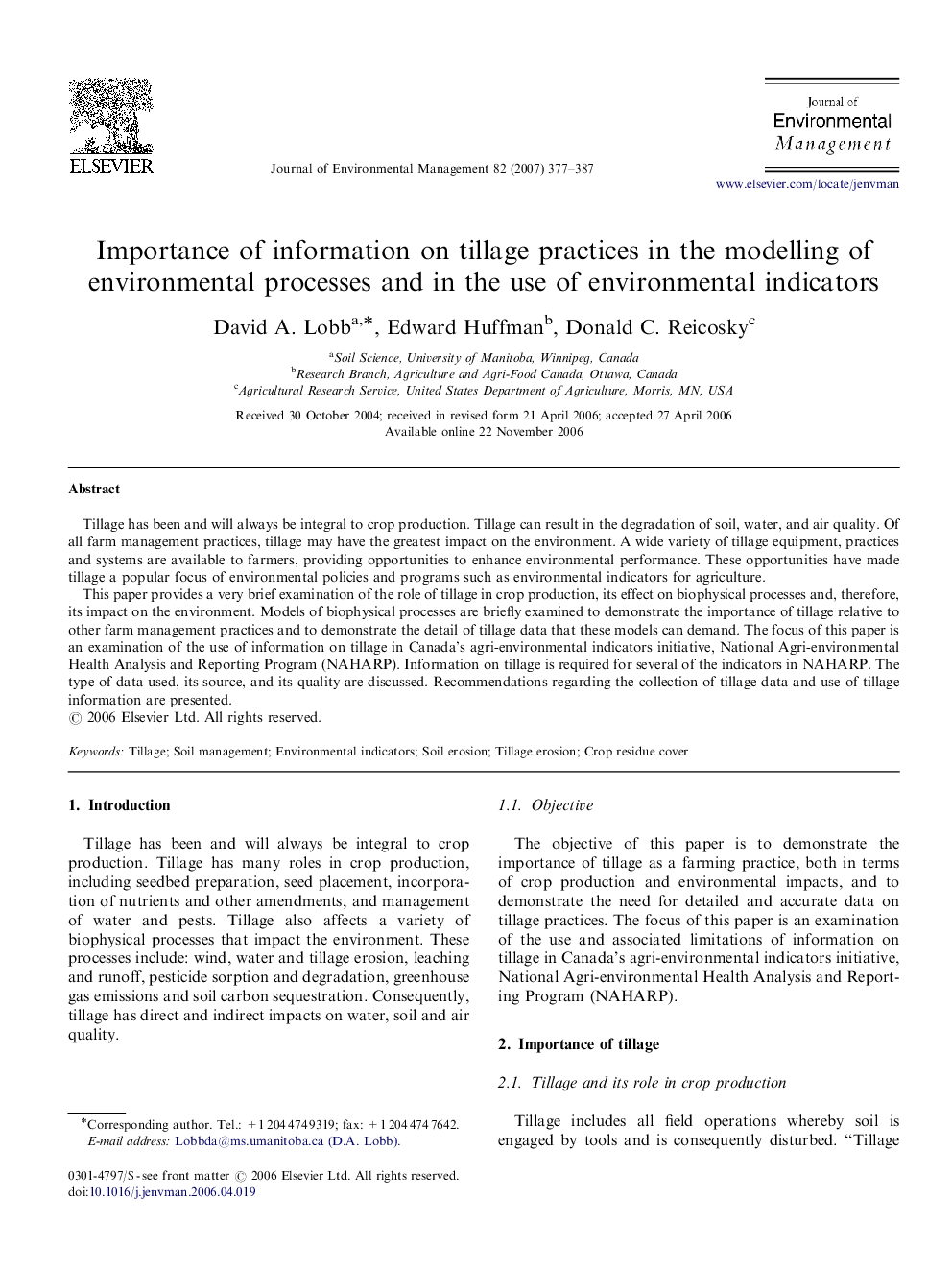| Article ID | Journal | Published Year | Pages | File Type |
|---|---|---|---|---|
| 1058826 | Journal of Environmental Management | 2007 | 11 Pages |
Tillage has been and will always be integral to crop production. Tillage can result in the degradation of soil, water, and air quality. Of all farm management practices, tillage may have the greatest impact on the environment. A wide variety of tillage equipment, practices and systems are available to farmers, providing opportunities to enhance environmental performance. These opportunities have made tillage a popular focus of environmental policies and programs such as environmental indicators for agriculture.This paper provides a very brief examination of the role of tillage in crop production, its effect on biophysical processes and, therefore, its impact on the environment. Models of biophysical processes are briefly examined to demonstrate the importance of tillage relative to other farm management practices and to demonstrate the detail of tillage data that these models can demand. The focus of this paper is an examination of the use of information on tillage in Canada's agri-environmental indicators initiative, National Agri-environmental Health Analysis and Reporting Program (NAHARP). Information on tillage is required for several of the indicators in NAHARP. The type of data used, its source, and its quality are discussed. Recommendations regarding the collection of tillage data and use of tillage information are presented.
